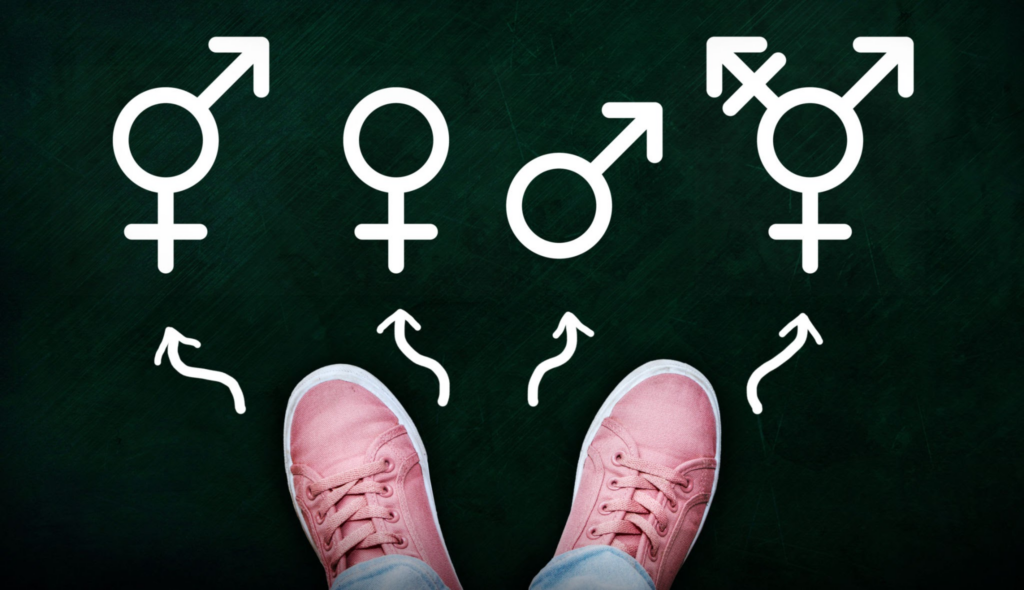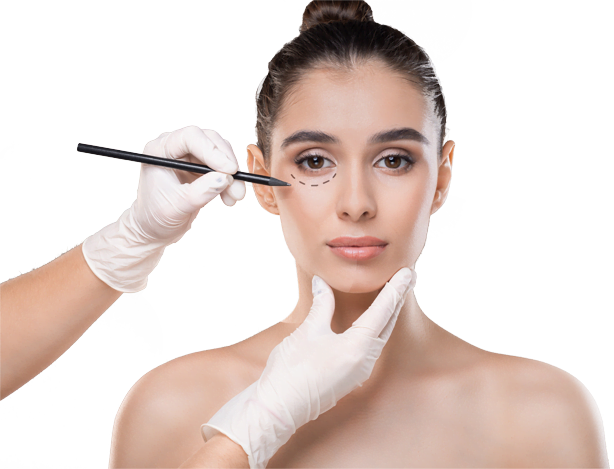Imagine waking up every morning and feeling like a stranger is inhabiting your body. This discomfort, this sense of disconnect between your internal self and your physical form, is a hallmark of gender dysphoria. But sometimes, this feeling of unease can be misconstrued as body dysmorphia, a mental health condition characterized by an obsessive preoccupation with perceived flaws in one’s appearance. While they may share some surface similarities, understanding the root causes and experiences of these conditions is crucial for proper diagnosis and support.
Table of Contents
Unveiling the Identity Crisis: Gender Dysphoria
Gender dysphoria is a complex phenomenon that transcends a simple dislike for one’s physical attributes. It’s a deep-seated incongruence between a person’s gender identity – the internal sense of being male, female, or something else entirely – and their assigned sex at birth. This mismatch can manifest in a multitude of ways, including:
- A persistent discomfort with one’s physical sex characteristics: This might involve feeling distressed by one’s chest, genitals, or overall body shape.
- A strong desire to identify with a different gender: This could involve wanting to dress, behave, and be seen as a different gender.
- A deep aversion to one’s sex assigned at birth: This might involve feeling like a boy trapped in a girl’s body or vice versa.
Think of gender identity as your internal software, and your physical body as the hardware. In gender dysphoria, the software and hardware are running incompatible programs, leading to a constant state of frustration.

Beyond the Mirror: Body Dysmorphia
Body dysmorphia, on the other hand, fixates on perceived flaws in one’s appearance. These flaws may be minor or even nonexistent to others, yet for someone with body dysmorphia, they become a source of immense distress. Here’s how it plays out:
- Obsessive preoccupation with appearance: Individuals with body dysmorphia spend an inordinate amount of time scrutinizing their bodies, often fixating on specific features they deem flawed.
- Repetitive behaviors: This can include excessive mirror checking, grooming rituals, or seeking reassurance from others about their appearance.
- Distorted body image: Despite external evidence, someone with body dysmorphia may be convinced their flaws are glaring and readily apparent to everyone.
Imagine looking in the mirror and seeing a distorted reflection, where a tiny mole morphs into a monstrous growth. That’s the essence of body dysmorphia – a reality warped by a relentless inner critic.

The Key Distinction: Root Cause and Focus
The fundamental difference between gender dysphoria and body dysmorphia lies in their core concerns. Gender dysphoria is rooted in a disconnect between internal identity and external presentation. Body dysmorphia, however, stems from an unhealthy fixation on perceived flaws in one’s appearance.
Here’s a table summarizing the key differences:
| Feature | Gender Dysphoria | Body Dysmorphia |
|---|---|---|
| Focus | Gender identity vs. assigned sex | Perceived flaws in appearance |
| Distress Source | Discomfort with physical sex characteristics | Fixation on minor or nonexistent flaws |
| Behaviors | May involve social transition, seeking gender-affirming care | Repetitive body checking, seeking reassurance |
| Internal Experience | Sense of being a different gender | Obsessive preoccupation with appearance |
Navigating the Maze: Overlaps and Co-occurrence
While distinct, gender dysphoria and body dysmorphia can sometimes overlap. For instance, someone with gender dysphoria may also experience body dysmorphia related to their sex characteristics. Conversely, someone with body dysmorphia might become fixated on features associated with a different gender.
This co-occurrence can make diagnosis and treatment more complex. However, a skilled mental health professional can tease out the underlying issues and develop a tailored treatment plan.

The Path to Wholeness: Treatment Options
Both gender dysphoria and body dysmorphia are treatable conditions. Here’s a glimpse into the available options:
Gender Dysphoria:
- Therapy: Individual and group therapy can help individuals explore their gender identity, develop coping mechanisms for dysphoria, and navigate social transition (if desired).
- Hormone therapy: This involves taking hormones that align with a person’s gender identity, leading to physical changes such as breast growth or facial hair development.
- Gender-affirming surgery: This is an option for some individuals to achieve physical congruence with their gender identity.
Body Dysmorphia:
- Cognitive-behavioral therapy (CBT): CBT helps individuals identify and challenge distorted thoughts about their appearance, leading to a more realistic self-image.
- Selective serotonin reuptake inhibitors (SSRIs): These medications can help regulate neurotransmitters associated with mood and anxiety, often improving symptoms of body dysmorphia.
It’s important to remember that treatment is a journey, not a destination. Both gender dysphoria and body dysmorphia require ongoing support and self-compassion. Finding a therapist who specializes in gender identity or body dysmorphia is crucial for effective treatment.

Beyond Labels: The Power of Self-Acceptance
While diagnosis can be helpful, it’s not the be-all and end-all. The most important aspect is self-acceptance. Whether you identify with gender dysphoria, body dysmorphia, or neither, embracing yourself and your unique experience is the cornerstone of well-being.
Here are some tips to cultivate self-acceptance:
- Challenge negative thoughts: When critical thoughts about your body or identity arise, challenge them with evidence-based self-talk.
- Focus on your strengths: Shift your focus from perceived flaws to your strengths, talents, and accomplishments.
- Practice self-compassion: Treat yourself with the same kindness and understanding you would offer a loved one.
- Connect with supportive communities: Surround yourself with people who celebrate you for who you are, regardless of labels.
Remember, you are not alone. There are countless individuals and communities out there who understand and support your journey.

Conclusion
Gender dysphoria and body dysmorphia, while distinct experiences, can share some characteristics. Recognizing the core concerns and available treatment options empowers individuals to seek help and build a more fulfilling life. By embracing self-acceptance and seeking support, we can all move towards a place of greater wholeness and self-compassion.
We hope that this article has provided you with useful information and solutions to your problems, and has inspired you to pursue your dreams and goals. If you have any questions, comments, or feedback, please feel free to contact us or leave a comment below. We would love to hear from you and to help you in any way we can. Thank you for reading and have a wonderful day!
Follow our blog for more. You can also reach us on our contact page for any questions you may have. Ffs center is an LGBT community friendly organization.
Frequently Asked Questions (FAQs)
1. Can someone experience both gender dysphoria and body dysmorphia?
Yes, it’s possible to experience both conditions. This co-occurrence can make diagnosis and treatment more complex, but with the help of a qualified professional, individuals can find effective management strategies.
2. Is there a cure for gender dysphoria or body dysmorphia?
There isn’t a “cure” for either condition, but effective treatments can significantly improve symptoms and overall well-being. Therapy, medication, and self-care practices can all play a role in managing these conditions.
3. How can I support someone who might be struggling with gender dysphoria or body dysmorphia?
The most important thing is to offer empathy and support. Listen without judgment, validate their feelings, and encourage them to seek professional help if needed. Here are some resources that can be helpful:
- The National Center for Transgender Equality: https://transequality.org/
- The Body Dysmorphic Disorder Foundation: https://youth.bddfoundation.org/
4. What if I’m not sure if I have gender dysphoria or body dysmorphia?
If you’re questioning your gender identity or experiencing distress about your appearance, a mental health professional can help you explore these concerns and reach a diagnosis. There’s no shame in seeking help, and it can be the first step towards a happier, healthier you.
5. Are there any online resources that can help with gender dysphoria or body dysmorphia?
There are many online resources available to provide support and information. However, it’s important to seek professional help for diagnosis and treatment. Here are some reputable starting points:
- The Trevor Project: https://www.thetrevorproject.org/ (for LGBTQ+ youth)
- The Jed Foundation: https://jedfoundation.org/ (for mental health resources)
Remember, reaching out for help is a sign of strength, not weakness. {finish}

